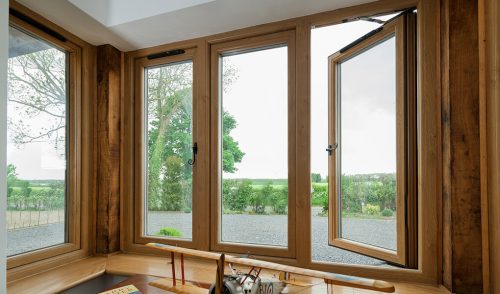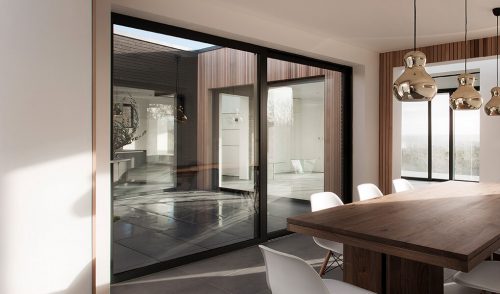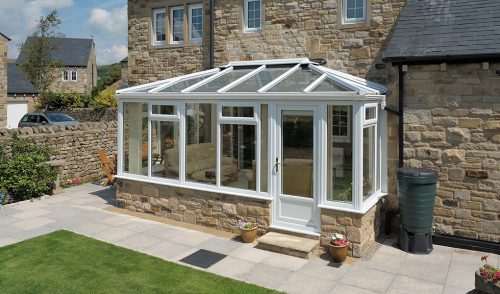When it comes to making changes to your home in a conservation area, understanding the planning permission process is crucial – and it’s not as daunting or challenging as many believe.
Conservation areas are designated for their special architectural or aesthetic interest, and as such, there are often stricter regulations in place to preserve their historic character.
This comprehensive guide will walk you through the ins and outs of obtaining planning permission for home improvement products for properties inside conservation areas, focusing on windows, doors, and conservatories.
We’ll explore the unique challenges and requirements you may face, and how Premier can assist you every step of the way.
Why Planning Permission in Conservation Areas Matters
Living in a conservation area is a great privilege, though it comes with a responsibility to help preserve the character of the area.
While you enjoy the charm and character of your surroundings, you also play a role in preserving it for future generations.
That’s where planning permission comes in. It ensures that any changes made to properties within the conservation area are in keeping with its special character and appearance.
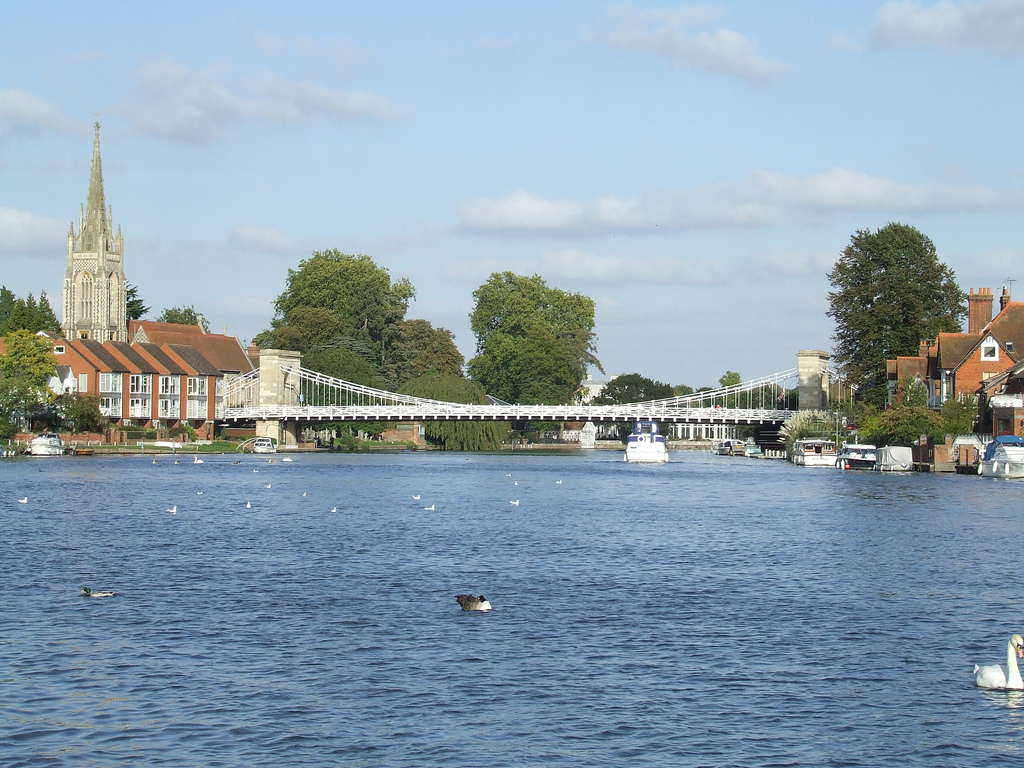
Understanding Conservation Area Planning Permission
What is a Conservation Area?
Conservation areas are places of special architectural or historic interest, the character of which is considered worthy of preservation or enhancement.
These areas can vary greatly in size and type, from city centres to rural villages.
For instance, the capital of England and the largest city in the UK, London, has 28 conservation areas – but they are also found in remote sections of the Yorkshire Dales, and various areas of our home country, Buckinghamshire.
Key features of conservation areas:
- Strict controls over the demolition of buildings
- Additional protection for trees
- Limitations on permitted development rights
- Special considerations for alterations and extensions
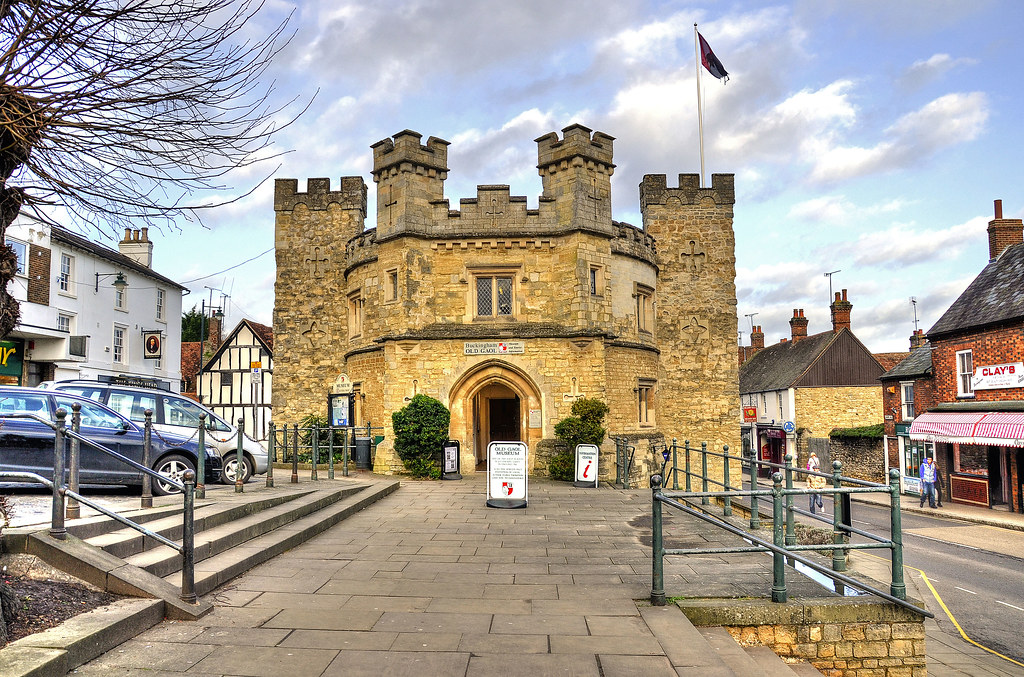
The Role of Planning Permission
In a conservation area, planning permission is often required for works that might otherwise be considered ‘permitted development’ in non-designated areas. This includes alterations to windows, doors, and the addition of conservatories.
Planning Permission for Windows in Conservation Areas
Replacing Windows: What You Need to Know
When it comes to replacing windows in a conservation area, the process can be more complex than in other locations. Here’s what you need to consider:
- Like-for-like replacements: In many cases, replacing windows with exact replicas may not require planning permission. However, it’s always best to check with your local planning authority.
- Material changes: Switching from wooden frames to uPVC, for example, will likely require planning permission.
- Style and design: Any changes to the style, size, or design of windows will usually need approval.
- Double glazing: While energy efficiency is important, installing double glazing in a conservation area may require special consideration to maintain the property’s character.
The Application Process for Window Replacements
- Research: Investigate the specific guidelines for your conservation area.
- Consultation: Speak with local planning officers for advice.
- Documentation: Prepare detailed plans and specifications of the proposed windows.
- Submission: Apply for planning permission through your local authority.
- Wait for approval: The process typically takes around 8-12 weeks.
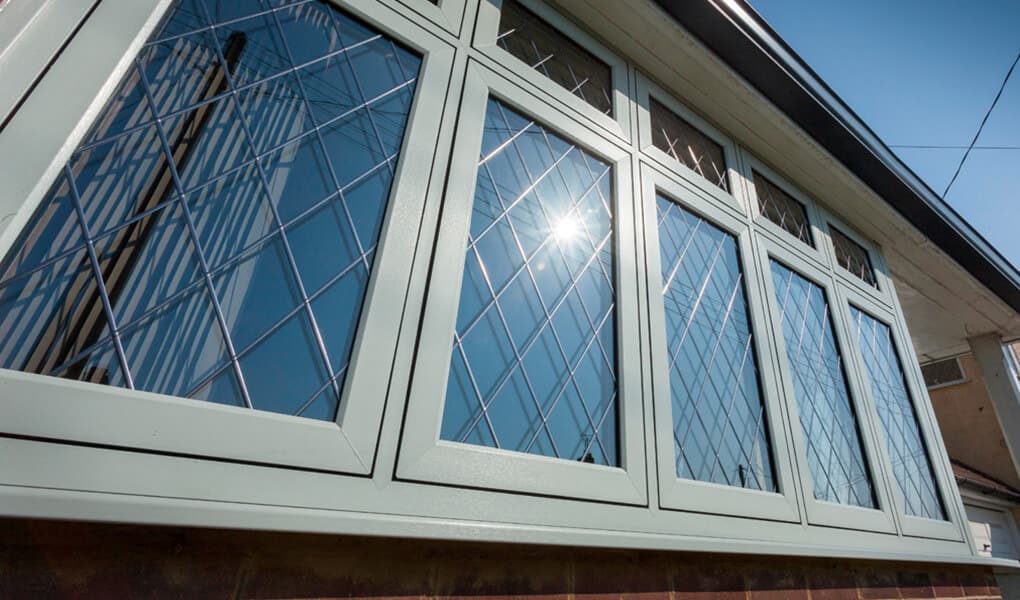
How Premier Windows Can Help
At Premier Windows, we specialise in conservation-friendly window solutions. Our team can:
- Provide expert advice on suitable window styles and materials
- Assist with the planning application process
- Offer bespoke window designs that meet conservation area requirements
- Ensure high-quality installation that respects the character of your property
Our Recommendation – The Residence Collection
The ideal way to avoid this headache is by installing windows from the Residence Collection.
Whether you opt for the Residence 9 or Residence 7 profiles, they are regularly approved for conservation areas – a feat that’s particularly impressive given the fact that they are made from uPVC.
The Residence Collection consists of windows designed to maximise performance, and as such have high thermal efficiency, durability, and are low maintenance – yet their woodgrain appearance means they achieve conservation area consent consistently.
They’re available to be installed with double or triple glazing, and thanks to 9-heat trapping chambers, they can significantly reduce your energy bills.
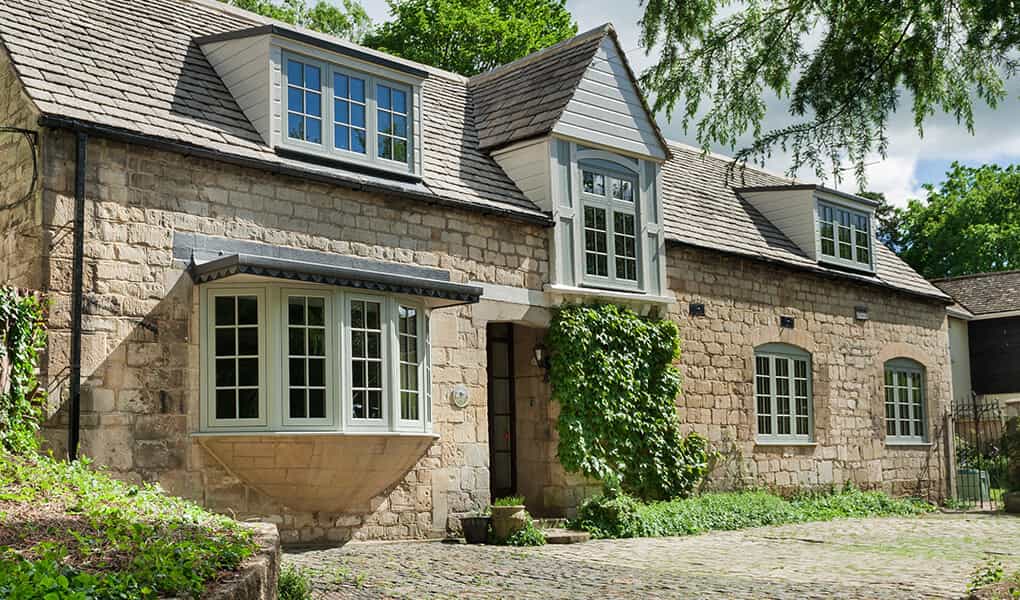
Planning Permission for Doors in Conservation Areas
The Importance of Door Design in Conservation Areas
Doors are often considered a focal point of a property’s façade, making them particularly important in conservation areas. Here’s what you need to know:
- Historical accuracy: Replacement doors should typically match the original in terms of style, material, and colour.
- Security concerns: While improving security is important, any changes must be sensitively done to maintain the area’s character.
- Glazing: Changes to the amount or style of glazing in doors may require permission.
Navigating the Door Replacement Process
- Assessment: Evaluate the current door and its historical significance.
- Design: Create a proposal that meets both your needs and conservation requirements.
- Consultation: Discuss your plans with local conservation officers.
- Application: Submit a detailed planning application if required.
- Implementation: Once approved, ensure careful installation to preserve the property’s character.
Premier’s Approach to Conservation Area Doors
At Premier, we understand the delicate balance between preservation and modernisation. Our services include:
- Crafting bespoke doors that match historical styles
- Advising on appropriate materials and finishes
- Assisting with the planning permission process
- Ensuring secure, energy-efficient installations that respect conservation guidelines
Our recommendation – Composite Doors with a Woodgrain Finish
Composite doors are perfectly adept at fitting into a historic environment, especially when applied with a woodgrain finish.
At Premier, our composite doors are available with dual colour installations – meaning that a woodgrain effect such as Golden Oak can help you to perfectly blend into your local area, yet you can still opt for a contemporary option such as Anthracite Grey to match your home’s aesthetic.
Composite doors add desirability to any home, largely thanks to their stunning appearance and host of modern-day benefits.
Increasing in popularity in recent times, they are constructed using a range of materials, including a GRP outer skin and a dense foam or timber core.
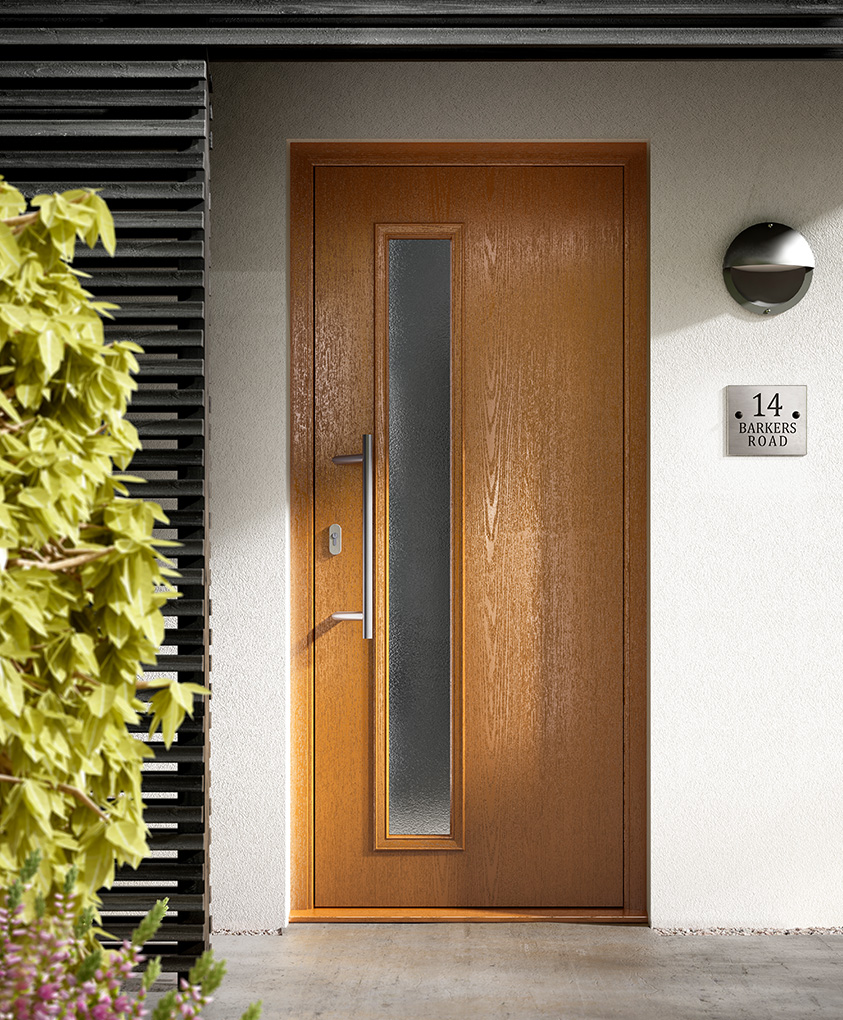
Planning Permission for Conservatories in Conservation Areas
Adding a conservatory to your property in a conservation area requires careful planning and often, explicit building consent. Here’s what you should know:
- Size and Location: The size and location of your proposed conservatory will significantly influence the planning permission process. Generally, smaller, less visible structures are more likely to be approved.
- Design and Materials: The design should complement your existing property and the surrounding area. Traditional materials and styles are often preferred in conservation areas.
- Impact on Neighbours: Consider how your conservatory might affect neighbouring properties. This includes issues like overshadowing and privacy.
- Roof Style: The roof style of your conservatory can be crucial in conservation areas. Lean-to or pitched roofs that blend with the existing structure are often favoured.
- Glazing: The type and amount of glazing used in your conservatory may be subject to specific regulations in conservation areas.
The Planning Permission Process:
- Pre-Application Consultation: Before submitting a formal application, it’s advisable to consult with your local planning authority. They can provide guidance on what’s likely to be acceptable in your specific conservation area.
- Gathering Documentation: You’ll need to prepare detailed plans, drawings, and potentially a design and access statement. These should clearly show how your proposed changes will impact the property and surrounding area.
- Submitting the Application: Submit your application to the local planning authority, along with the required fee. In conservation areas, you may need to provide additional information about the historical context of your property.
- Public Consultation: Your application will be made public, allowing neighbours and other interested parties to comment.
- Decision Process: The local authority will review your application, considering factors such as the impact on the conservation area’s character, neighbour amenities, and local planning policies.
- Outcome: You’ll receive either approval, approval with conditions, or refusal. If refused, you have the option to appeal or modify and resubmit your application.
How Premier Windows Can Help:
At Premier, we understand the unique challenges of home improvements in conservation areas. Our team of experts can:
- Provide Guidance: We offer expert advice on products that are likely to be approved in conservation areas, such as our Residence Collection windows.
- Assist with Documentation: Our team can help prepare the necessary drawings and documentation for your planning application.
- Liaise with Local Authorities: We have experience working with local planning departments and can help navigate the complexities of the application process.
- Offer Bespoke Solutions: Our range of products includes options specifically designed to meet conservation area requirements while providing modern performance benefits.
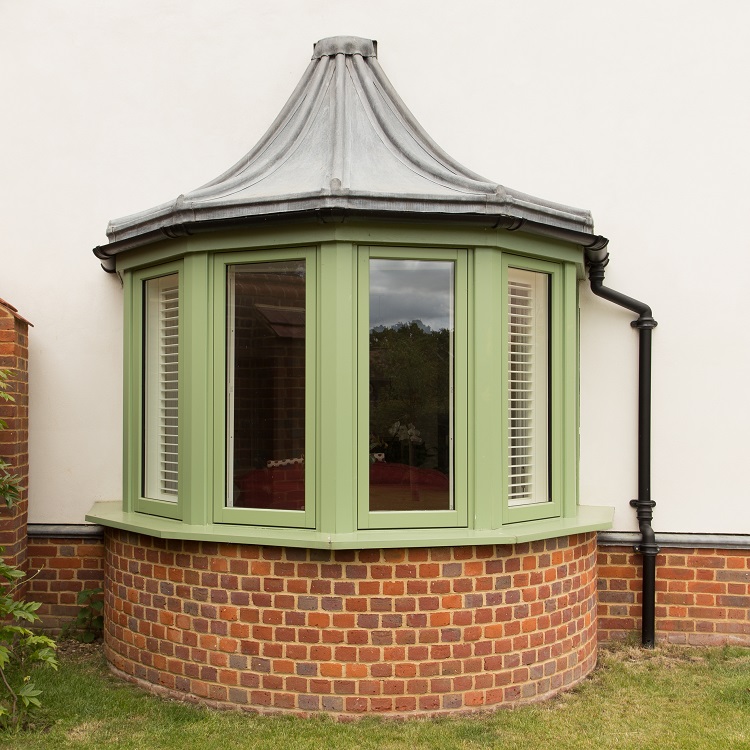
Premier’s Expertise in Conservation Area Conservatories
At Premier Windows, we specialise in designing and installing conservatories that enhance properties in conservation areas. Our approach includes:
- Tailored designs that complement the existing architecture
- Use of traditional materials and techniques where appropriate
- Incorporation of modern energy-efficiency features without compromising aesthetics
- Comprehensive support throughout the planning permission process
We install Lean-to conservatories, a great option for space saving – but also one that’s more likely to pass through conservation area building regulations.
Navigating the Planning Permission Process
Tips for a Successful Application
- Start early: The process can take several months, so begin planning well in advance.
- Research thoroughly: Understand the specific guidelines for your conservation area.
- Seek professional advice: Consult with architects or planning experts familiar with conservation areas.
- Communicate clearly: Maintain open dialogue with planning officers throughout the process.
- Be flexible: Be prepared to modify your plans to meet conservation requirements.
Common Pitfalls to Avoid
- Assuming ‘permitted development’ rights apply in conservation areas
- Neglecting to consult neighbours who may be affected by your plans
- Submitting incomplete or inaccurate documentation
- Ignoring the specific character and guidelines of your conservation area
- Proceeding with work without necessary approvals
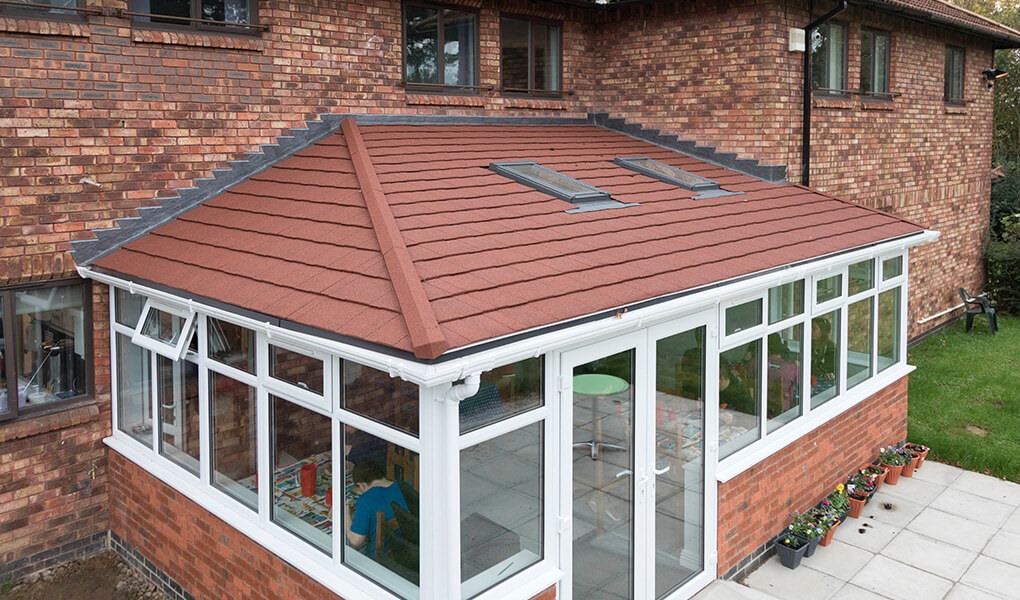
How Premier Windows Can Support Your Project
At Premier Windows, we understand the intricacies of planning permission in conservation areas. Our comprehensive support includes:
- Initial consultation: We’ll assess your property and discuss your vision.
- Design expertise: Our team will create plans that meet both your needs and conservation requirements.
- Documentation preparation: We’ll help compile all necessary documents for your application.
- Liaison with authorities: We can communicate with planning officers on your behalf.
- Project management: From application to installation, we’ll oversee every aspect of your project.
Conclusion
Navigating the planning permission process in a conservation area can seem daunting, but with the right knowledge and support, it’s entirely manageable. Remember, the goal is to enhance and preserve the unique character of these special areas while allowing for necessary improvements and modernisation.
By understanding the specific requirements for windows, doors, and conservatories, and following the application process carefully, you can successfully update your home while respecting its historical context. Premier are here to guide you through every step, ensuring a smooth process and beautiful results that enhance both your property and the conservation area.
About Premier
Premier Windows is a leading provider of high-quality windows, doors, and conservatories, specialising in solutions for conservation areas.
With years of experience and a deep understanding of planning requirements, we’re committed to helping homeowners enhance their properties while preserving the character of their neighbourhoods.
Our team of experts combines traditional craftsmanship with modern technology to deliver exceptional results that stand the test of time. Whether you’re looking to replace windows, update doors, or add a stunning conservatory, Premier Windows is your trusted partner in navigating the complexities of conservation area improvements.
We offer free quotes on all of our product range, whether you’re after casement windows, bifold doors, Edwardian conservatories, etc, which you can obtain here.
If you have any queries or would like further information, you can get in touch with our friendly team on 0800 854 353, or by emailing enquiries@premwindowsanddoors.co.uk
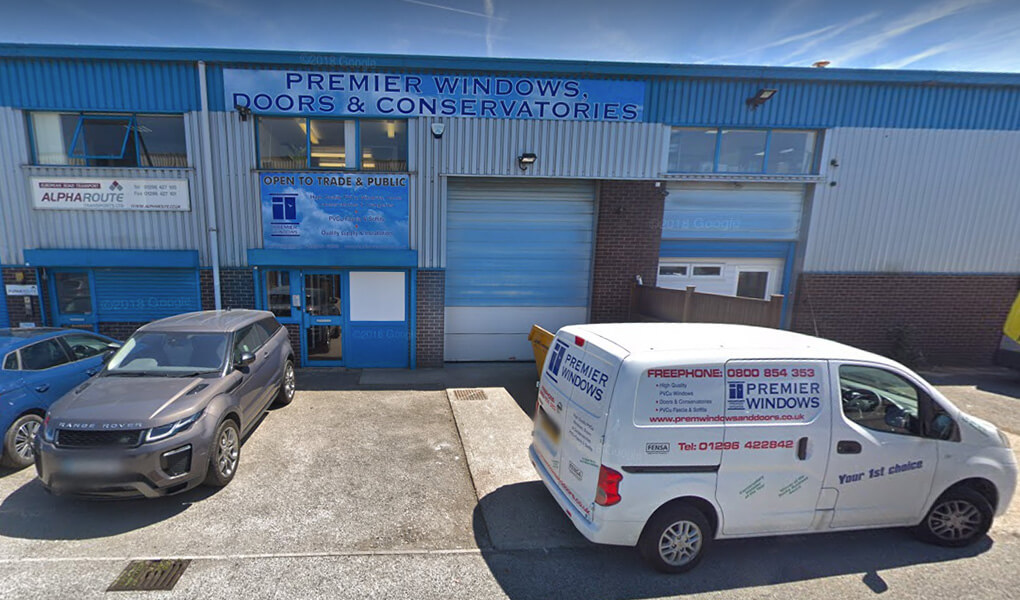
Get a free quote
If you're interested in any of products then get in touch with us to get your free quote today.
Book an appointment
If you would like to discuss our incredible range of products, then book an appointment today.

